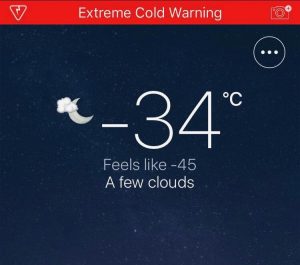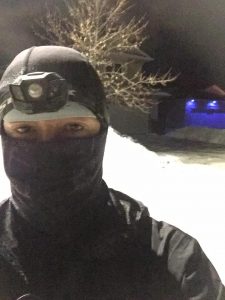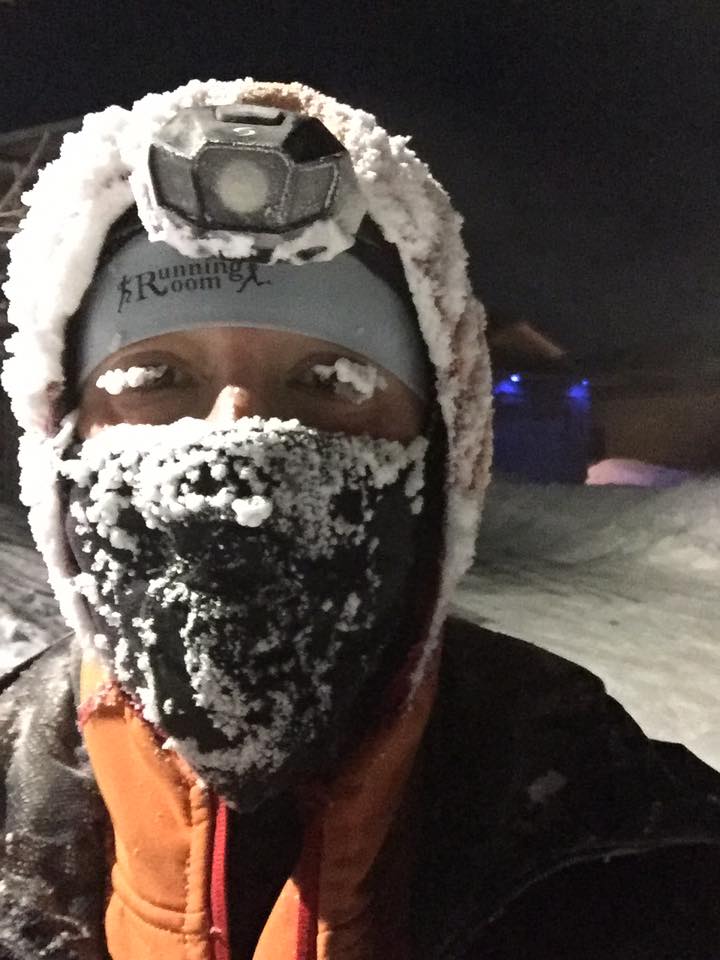I live in a province with extreme weather. Our summers can heat up to 36℃ and our winters can be -36℃. About 15 years ago I started running to keep my fitness level up while I was travelling. I took a Couch to 5km running clinic in the fall and it set me up for success. When I started I could not run once around the track without feeling like I was going to hack up a lung. But I attended each session and did all the homework assigned. As we approached winter I knew if I could manage to run through the winter outside I would be able to maintain this new regime. If I didn’t run through the winter I knew my chances of maintaining my fitness level or continuing to run was unlikely. I didn’t buy any technical winter running gear because that was going to be my reward for completing a full year of running in all seasons. This one I just had to slug it out. And I did.
For the last 15 years I have run, on average, three times a week. I run in all weather — rain, shine, hot, or cold. This past week it was -35℃ with a wind chill that made it feel like -45, and because it was my scheduled run day, I ran. I posted a picture to Facebook afterwards and it garnered some attention and a lot of positive comments about how my actions were admirable. I do not view my running habits in the same vein as these comments. It is an agreement I made with myself, and is just what I do. I am a runner, this is where I live, and I like to run outside not on a treadmill. So I run. And I run in whatever God and the universe is throwing my way.
The picture appears extreme, possibly dramatic, but I am not cold. In fact, I also shoveled snow before heading inside. I wasn’t cold because I was prepared for the weather, both mentally and physically. I wear multiple layers that perform multiple duties to keep me warm and dry. And don’t forget that as I run my body is generating a lot of heat. I also run a shorter course that has a lot of turnoff points and shortcuts to get me home quickly if I become injured or in some other trouble. To maintain my safety, I take my phone, wear a headlamp and a flashing light, among other precautions. . Even so, my safety is not assured, it is never assured, in any weather, in any town, at any time of day.
turnoff points and shortcuts to get me home quickly if I become injured or in some other trouble. To maintain my safety, I take my phone, wear a headlamp and a flashing light, among other precautions. . Even so, my safety is not assured, it is never assured, in any weather, in any town, at any time of day.
If I didn’t run through the winter it could mean I don’t run a lot of the year. And I chose to live here, so in my brain, the weather is just a constraint I have to manage. And it is important to note that I am not an anomaly. In fact, my neighbour and friend also runs in these temperatures.
Like with any good project or business endeavor, planning is important. If I didn’t have a plan of what to wear or how to maintain my safety during a run I would be at risk of failure, or in these temperatures, frostbite or potentially death. Risk analysis should be a key activity you perform in preparing for execution. Identifying the most important risks and developing strategies to mitigate the risks has proven effective in reducing the likelihood that risk will occur.
The basic steps of a risk analysis using this running scenario:
- Risk Identification – Sub-zero temperatures could result in severe frostbite or potentially death.
- Risk Analysis – What is the impact of severe frostbite? It affects all layers of skin and tissue, and potential long-term effects are loss of sensation to cold, pain, or damage to the area, or joints may no longer work. The impact of death seems pretty obvious…
- Risk Mitigation – Wear multiple layers as prescribed by experts, design your route with turnoff points to get home quick, take a phone, and tell someone which route you are running, how long you plan to be and when you are leaving. Here are some of the risk mitigation strategies you can use in planning.

- Prevention – action steps required to prevent the risk from occurring
- Reduction – action steps required to prevent the likelihood of the risk occurring or to reduce its effect
- Transference – action steps to transfer the risk to an area that is less impactful
- Contingency – action steps required to react to the risk if it occurs in order to minimize its impact on the business
- Acceptance – agree the risk will occur and build plans accordingly
Or if you can, wait two days and see what has changed that will minimize your risks. Here is another set of photos taken two days after the ones above. They are taken just like the others, after my run, but the temperature is 21 degrees warmer. There is still risk, but the characteristics of the risk have changed dramatically. In fact, some have been eliminated completely. This can also hap pen in your business or project as quickly as the weather changes. It is up to you not only to manage the risk and the change, but also to keep moving.
pen in your business or project as quickly as the weather changes. It is up to you not only to manage the risk and the change, but also to keep moving.
Being relentless is not a one-time deal.

